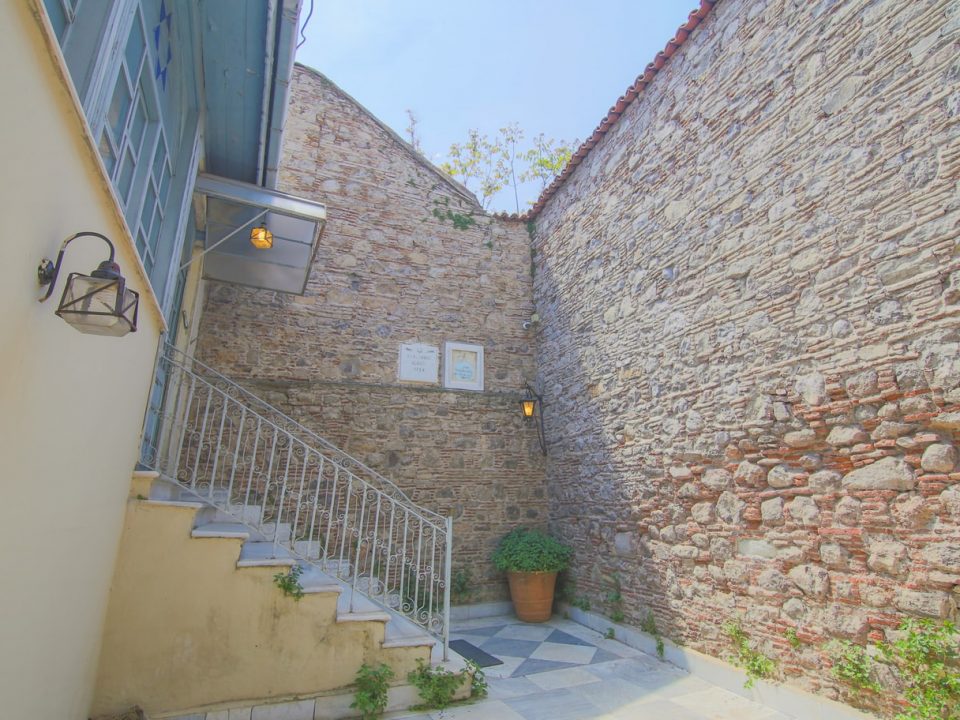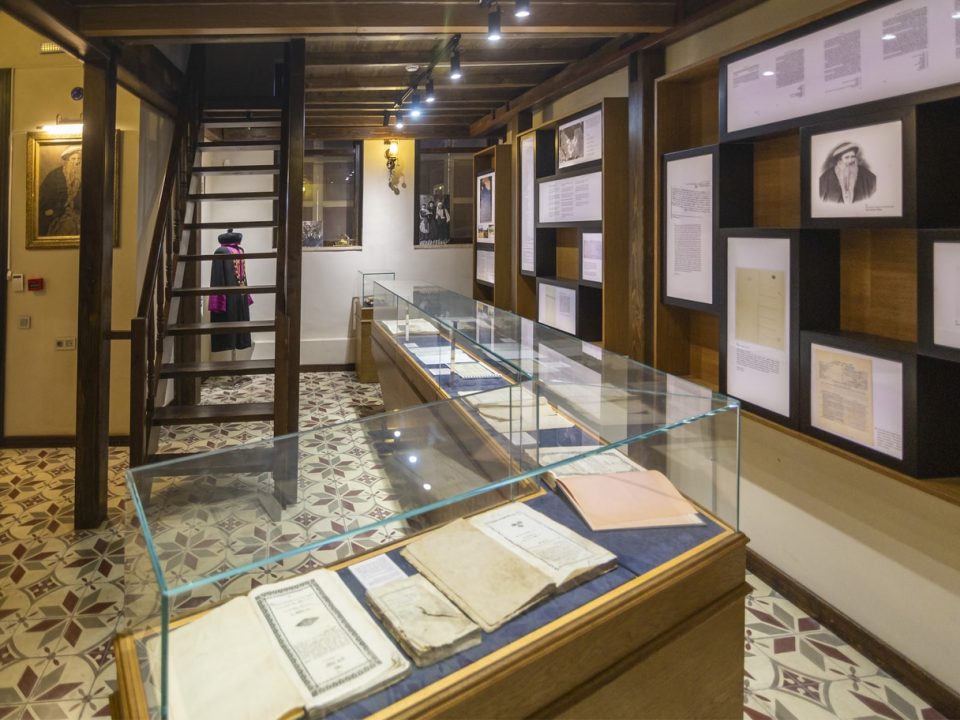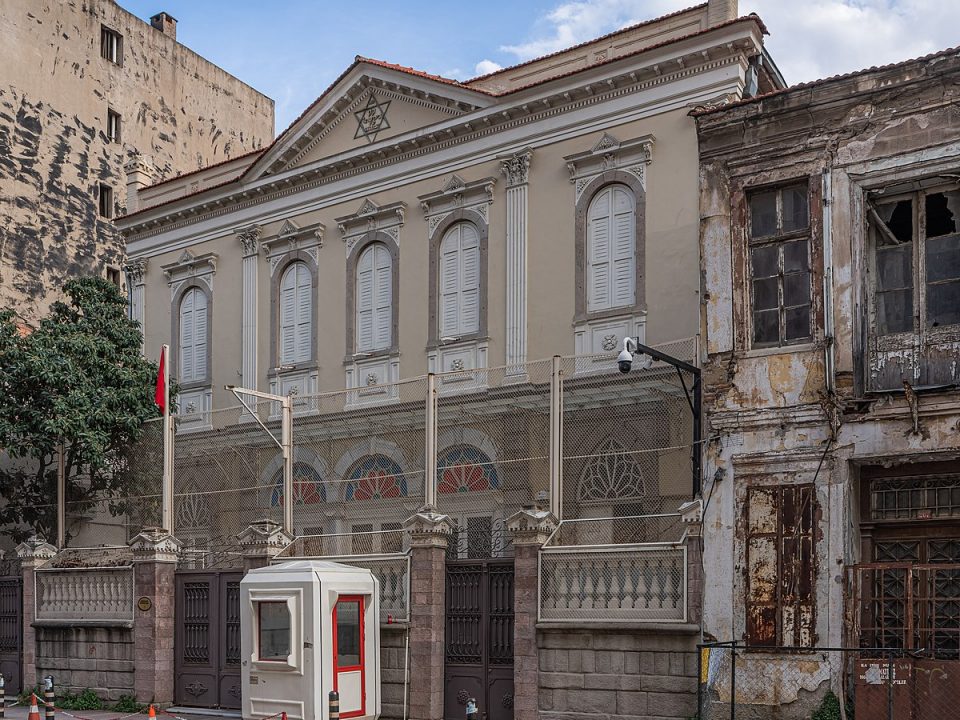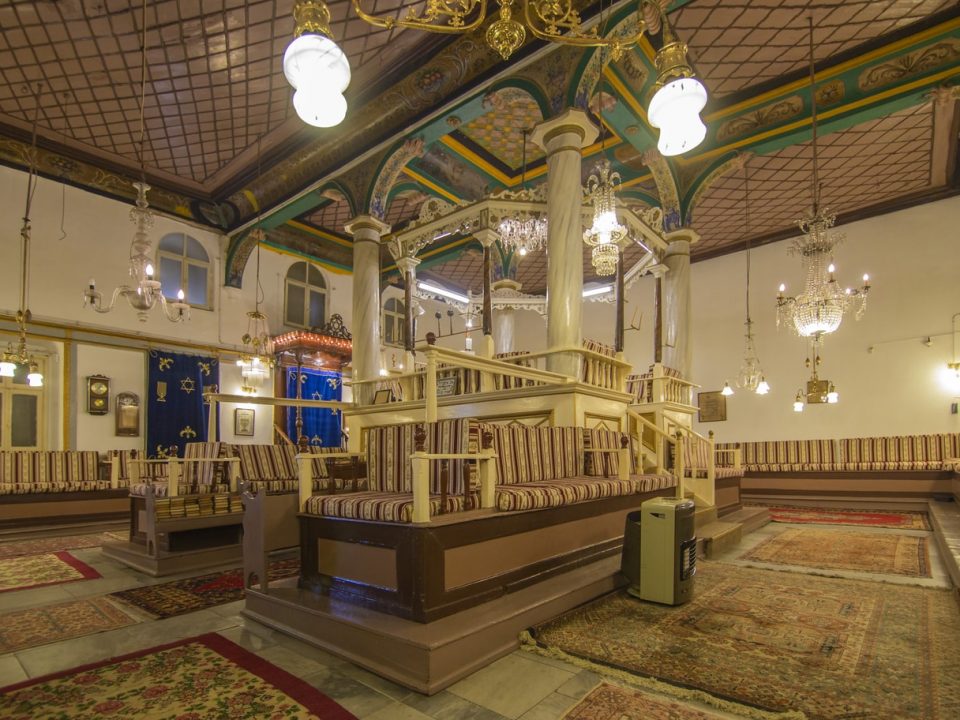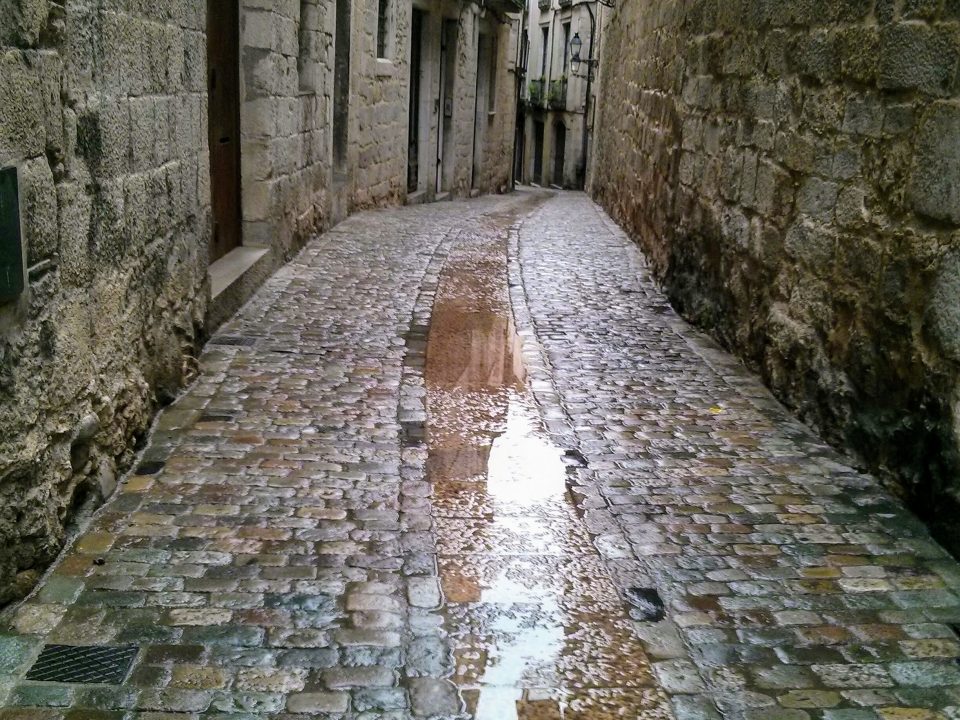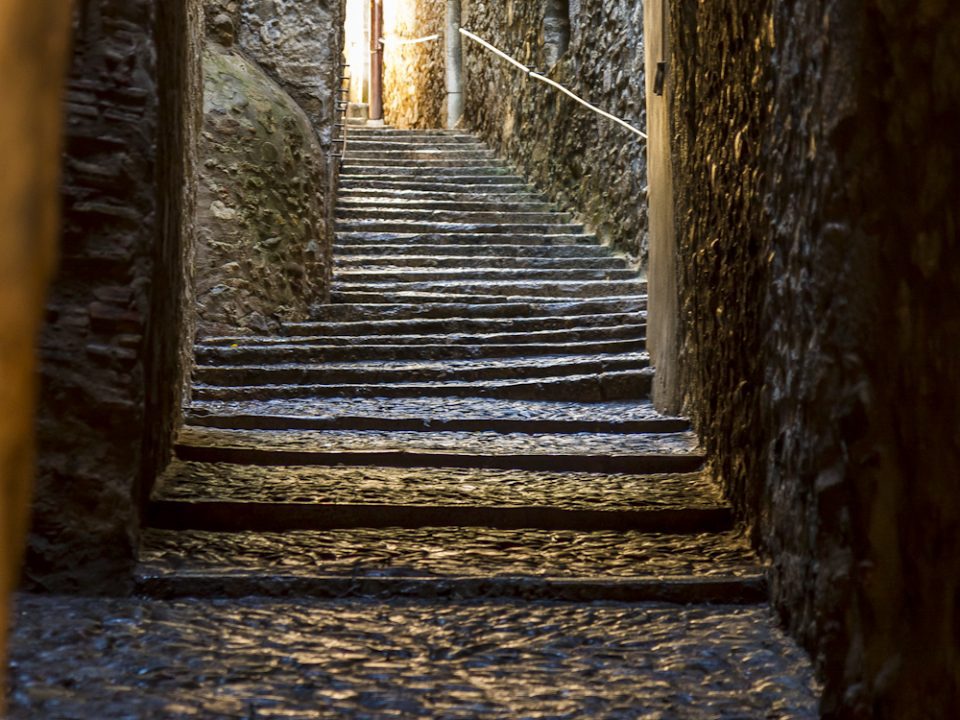Kortijos (cortejos) were the dwellings carrying the architectural characteristics brought to Izmir by the Sephardic Jews as they migrated from the Iberian Peninsula to the Ottoman Empire. Surrounded by the high walls of a two-storied building, the rooms of a kortijo would be facing a courtyard with a faucet or well, serving like a common guest room.
Kurtuluş Mah., Anafartalar Cad., Konak – İzmir
+90 232 464 07 18
ebrulitur@ebruliturizm.com.tr
Website
Due to the inscription at the entrance of the Algazi Synagogue, it is accepted that it was built in 1724 by Isaac Algazi. Another view claims that this synagogue existed at least in the 17th century and was controlled by Sabetay Sevi in 1666.
The basement floor was used as Midrash and was a place where Asara Batlanim (ten old men) prayed for the salvation of the country and the people all day long. In addition, unused scriptures and religious objects were stored there before being buried. This place was known as “El Kal de Abaşo” (the Lower Synagogue).
Izak Ben Salomon Algazı, another member of the Algazi Family known to have raised prominent rabbis, is also an associated figure with this synagogue.The excavations carried out at Bonastruc ça Porta Center (2012/2013) to enable a space for temporary exhibitions discovered the remains of a Jewish house built in the 13th century. At the end of the 14th century it suffered a fire, and in the 15th century, it was reused as a Jewish butcher shop, part of the complex of the synagogue, until 1492. A few years later it was demolished and turned into a courtyard where in 19th and 20th c. they built new walls and sewers.
Bet Hillel Synagogue was established in the house of the Palachi family. Rabbi Hayim Palachi (1788-1869) and his son Rabbi Abraham Palachi (1809-1899) were the most prominent theologians of the Izmir Jewish community in the 19th century. Both being referred to as the greatest men of the period, their reputation went beyond Izmir and the Ottoman Empire then, causing the Jewish theologues of Europe and Middle East to come to Izmir for consultation.
Rabbi Hayim Palachi wrote a total of 72 books all through his life, and of these, 26 books were published. He was awarded the “theologian responsible for justice” in 1861 by the Sultan Abdulmecid.
Along with the tomb of Rabbi Hayim Palachi and the Mikveh (purification pool) in the Gurcesme cemetery, Bet Hillel Synagogue is believed to be among the holy places by Palachi’s students.The Jewish bourgeoisie which started to develop in the middle of the 19th century, left the traditional Jewish quarters and founded a new residential area. This area was the southern coast and hills of the bay, now known as Karatas district. With the gradual population increase in this area, the existing synagogues became insufficient.
To build a new and larger synagogue, an application was filed with Sultan Abdulhamid II. Upon the Sultan’s edict, the construction of Beit Israel Synagogue started on 15th March 1905 and was opened to prayer in 1907. However, economic distress delayed the completion of its internal decoration and the synagogue took its present state only by 1950.
Beit Israel is the largest, most magnificent and ceremonial synagogue of Izmir.In 1724, Salomon de Ciaves, a Portuguese originned Dutch immigrant to Izmir, donated one of his houses which had a large courtyard, to be used as a synagogue and ensured the purchase of all the religious books and sacred objects required. He also granted some houses and shops adjacent in order to bring some revenue to the synagogue.
At first known as the “Ciaves Synagogue”, it started to be called as the Bikur Holim Synagogue. This new name, meaning visiting the sick, dates to the periods when the basement of the synagogue was used as a hospital during a plague or cholera epidemics, then frequently seen in the city.
It is also possible that the said basement was once the Bet Din prison.Along with Sant Llorenç street, undoubtedly forms the most charming area of the whole call (medieval Jewish quarter). At the crossroads of Cúdaro and Claveria streets with Pujada de la Catedral (the Pera steps), there stood one of the large wooden gates which, in the event of danger, closed and confined the call of Girona. Along with the streets of Sant Llorenç and Hernández (the latter closed at both ends), they connect the upper limit of the Jewish (Claveri¬a and Doctor Oliva i Prat streets) with Força street.
The main thoroughfare of the medieval city and the call (medieval Jewish quarter), also corresponds to the Roman cardus and via Augusta and it takes its name from the fortress which Girona represents. In 1373 it already was the centre of the call, known as Carrer Major del Call On its Western side the call opened out into narrow, steep streets like that of Lluis Batlle street, ancient Synagogue street, Hernández street or Cúndaro street, or the upper stretch of Força street which received the street name Carrer Major del Call Judaic or Mercadell since a medieval market was located at the end of it. At the end of the 14th century this street was declared by the Christian authorities to be a forbidden space to Jews and was renamed Sant Llorenç street.
One of the most emblematic streets in Girona and centre of the call (medieval Jewish quarter) in the 15th century. At the same entrance of Sant Llorenç street from Força street, it is still possible to locate the hinges of the old gate which kept these steps closed until 1975. In the middle of its steep steps was the gate which led , via an access of courtyards and porches, to the building which housed the last Synagogue in the 15th century, today part of the Museum of Jewish History.

